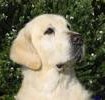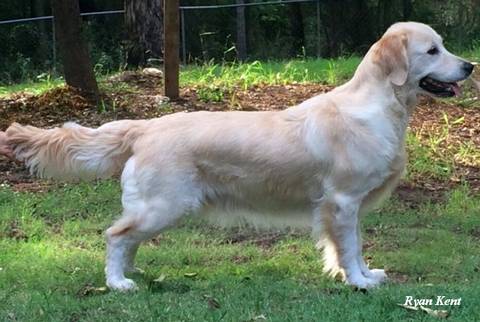BREED Info
Each breed of dog was created with a specific task in mind, whether that task was hunting, herding, sledding, or companion animal. Certain traits were selected for that would enable a dog to better perform its designated task. These traits comprised both physical and temperamental aspects. Established breeds each have a written standard. A standard is a description of the ideal specimen of the breed. Standards describe both physical and temperamental aspects that should be present in the breed: those traits that were selected for during the creation of the breed. Think of a standard as a blueprint which breeders can refer to when "building" the best dogs. This is one way breeders can help ensure that the dogs they are breeding are good representatives of their breed.
With the ideal specimen firmly established in the breeder's mind, he/she then works towards producing dogs that most resemble the standard. There is no such thing as the "perfect dog", but it is the goal of ethical breeders to try to get as close to perfection as is possible. The desire of those who are seriously involved in purebred dogs is to see each breed--as a whole--continue to improve generation after generation and reach that pinnacle of perfection known as �the standard�. This is what is meant by "bettering the breed".
GOLDEN RETRIEVER STANDARD
APPEARANCE
The General Appearance of the Golden Retriever as described in the breed standard is as follows: Symmetrical, balanced, active, powerful, level mover; sound with kindly expression.The Golden Retriever is a medium to large dog, who possesses a medium to long coat. Their colour ranges from gold to cream. They are an active breed that thrives on training and interaction with their family.
HISTORY
The development of The Golden Retriever is attributed to Lord Tweedsmuir at his estate, Guisachan, at Inverness-Shire, Scotland, north of the English border, along the Tweed River.
In 1865, he acquired his first Yellow Retriever, named Nous, who was bred to a type of dog called the Tweed Water Spaniel (Belle), commonly found in the Border country. The Golden Retriever dog. Nous and Belle produced 4 yellow puppies in 1868, Crocus, Cowslip, Primrose and Ada. From the four, followed additional crosses to the Water Dogs, an Irish Setter and sandy coloured Bloodhounds.
First shown in 1908, they were granted breed status by the Kennel Club in 1913, and became known as the Retriever (Golden and Yellow). In 1920 the name was changed to Golden Retriever.
The earliest known records relating to Golden Retrievers in Australia commence in 1937, however there has been some indication that Goldens may have been brought here as early as 1914. The first documented information on Golden Retrievers in Australia can be found in Victoria, with the registration of Grakle of Tone, born 1 April 1937. A bitch was also imported and the first Golden litter was born in Australia on 28 September 1938.
TEMPERMENT
The Standard of the Golden Retriever specifies their temperament as - Kindly, friendly and confident.
A Golden Retriever should never be shy or aggressive. They should be a happy, outgoing dog. The characteristics of the breed from the breed standard state: Biddable, intelligent and possessing natural working ability.
When choosing a Golden Retrievers you need to be able to observe and interact with the mother of the puppies, and to see the litter and how the puppies behave in their interactions with each other and with people. If you are not allowed to see the mother and other puppies in the litter (if there was more than one), alarm bells should ring. Both the mother and puppies should be happy and outgoing. Avoid shy or timid puppies.
CARE/GROOMING
Golden Retrievers require regular grooming. Pet Goldens require brushing 2 – 3 times a week plus regular bathing. During summer months, fortnightly bathing is recommended. During cooler months, bathing can be required every 3 – 4 weeks depending on the individual situation.
Goldens benefit from regular trimming to keep their lovely coats tidy. This includes their nails, excess hair around and under the feet and the tip of the tail. Goldens that are shown will also require additional grooming of the neck.
HEALTH
Golden Retrievers are a healthy breed of dog who tend to live on average 12 – 13 years. It is not uncommon to hear of Goldens living well past 15.
Like all breeds of dogs, Golden Retrievers as a breed are disposed to certain genetic diseases. Responsible breeders, breed clubs, the Australian National Kennel Association and Canine Control Council (Queensland) (and parallel bodies interstate) have been endeavouring to eliminate or at least reduce the incidence of the most common hereditary diseases by screening breeding stock.
The diseases for which such screening is required in Golden Retrievers are –
(a) hip dysplasia;
(b) OCD (osteochondritis dissecans);
(c) Eye diseases;
(d) Aortic Stenosis (SAS) (heart disease).
Buyers should insist on seeing all breeding certification for both parents before committing to purchase a puppy.
Goldens will require to be kept flea and tick free. They are particularly sensitive to fleas and will develop skin irritations if they become infested. They must also receive regular heartworm prevention and be treated regularly for intestinal worms.
One common ailment experienced in some Goldens are “hot spots”. These are acute areas of skin irritation which can develop during hot, humid weather. These hot spots can require veterinary treatment as they are prone to become infected.


"
|
|


